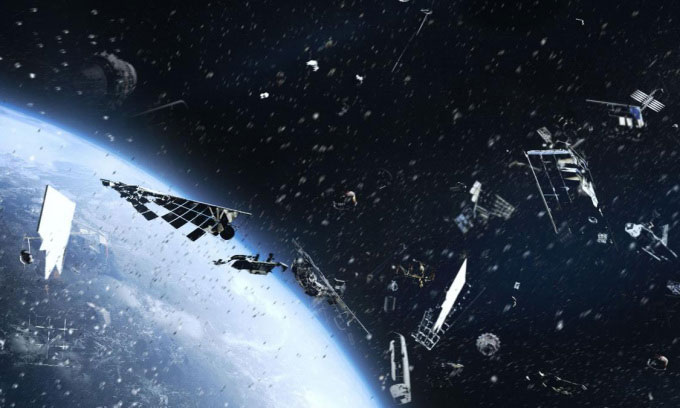Found satellite missing for nearly 30 years in orbit
Satellite S73-7 is 66 cm wide, operates in an 800 km high orbit and has disappeared from radar since the 1990s .
The Infra-Red Calibration Balloon (S73-7) satellite was launched into space on April 10, 1974 through the US Air Force Space Test Program. This satellite belongs to the Hexagon System, in which S73-7 is deployed from a larger satellite in space.

Simulation of space junk flying around Earth. (Photo: janiecbros/iStock).
According to the original plan, S73-7 would inflate and become a calibration target for remote sensing equipment. After this mission failed, the satellite went missing and became space junk until it was rediscovered last month, Live Science reported on May 6. Jonathan McDowell, an astrophysicist at the Harvard-Smithsonian Center for Astrophysics, studied the archived data and found that S73-7 had disappeared from radar twice - first in the 1970s and The last time was in the 1990s.
"The problem here is that S73-7 may have a very small radar cross-section, it is also possible that what is being tracked is a piece of satellite that is not deployed properly, is not metal and is not clearly visible on radar." , McDowell explains.
Knowing the location and identity of each object in orbit is not easy because the current number of objects is more than 20,000. Using ground-based radar and optical sensors, experts can track space junk, but determining exactly what each object is remains challenging. Sensors can detect an object in orbit, but it must then be matched with a satellite on the same flight path.
After launch, engineers know where the satellite will head and how high it is expected to rise. With this information, they can review progress and compare it with where the satellite was last observed. However, if there are any changes to the original travel plan or if the satellite drifts, engineers will have a lot of work to do to find it again.
That's why the discovery of S73-7 is a victory for those trying to track tens of thousands of lost satellites and other objects orbiting Earth. But as more and more satellites fly into space, understanding exactly what's up there and the potential threats will become more challenging.
"If you miss one or two objects, it's not a big risk. But you want to do the best job possible ," McDowell said.
- Japan 's 273 million dollar black hole satellite is missing
- More than 1,200 satellites orbit the next 10 years
- Reconnect with the old satellite
- Found NASA satellite missing 12 years in the universe
- Russia's killer satellite suddenly reactivated after 2 years
- Iran is about to put 3 satellites into orbit
- Capture the world's largest satellite image missing
- Chinese satellite pulls another satellite out of orbit
- America put satellite reconnaissance on orbit
- Singapore successfully launched the first homemade satellite
- Russia spoiled the satellite again
- NASA satellite crashed into the Pacific Ocean and went missing
 Van Allen's belt and evidence that the Apollo 11 mission to the Moon was myth
Van Allen's belt and evidence that the Apollo 11 mission to the Moon was myth The levels of civilization in the universe (Kardashev scale)
The levels of civilization in the universe (Kardashev scale) Today Mars, the sun and the Earth are aligned
Today Mars, the sun and the Earth are aligned The Amazon owner announced a secret plan to build a space base for thousands of people
The Amazon owner announced a secret plan to build a space base for thousands of people